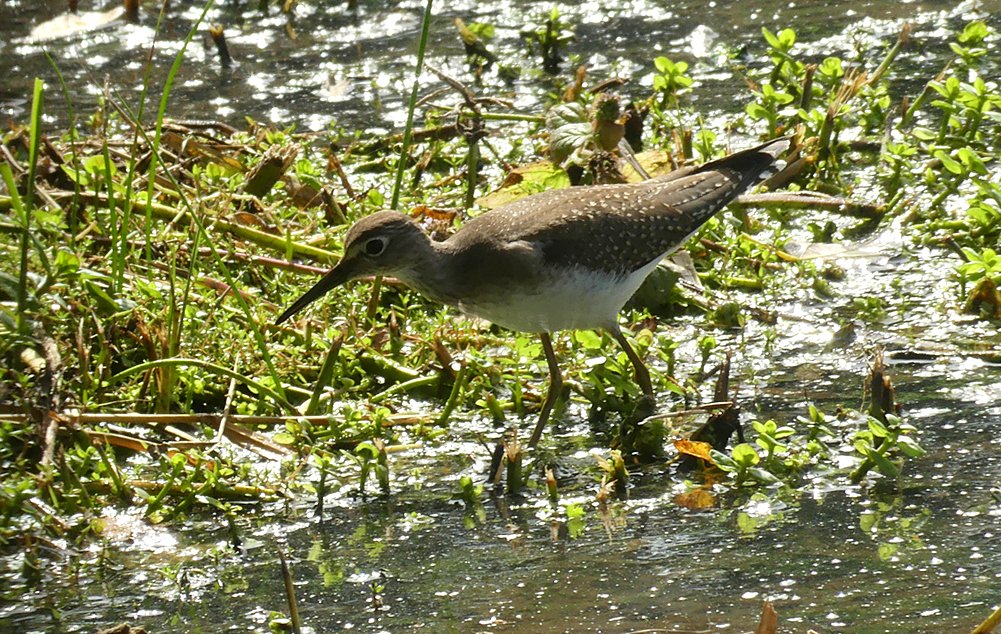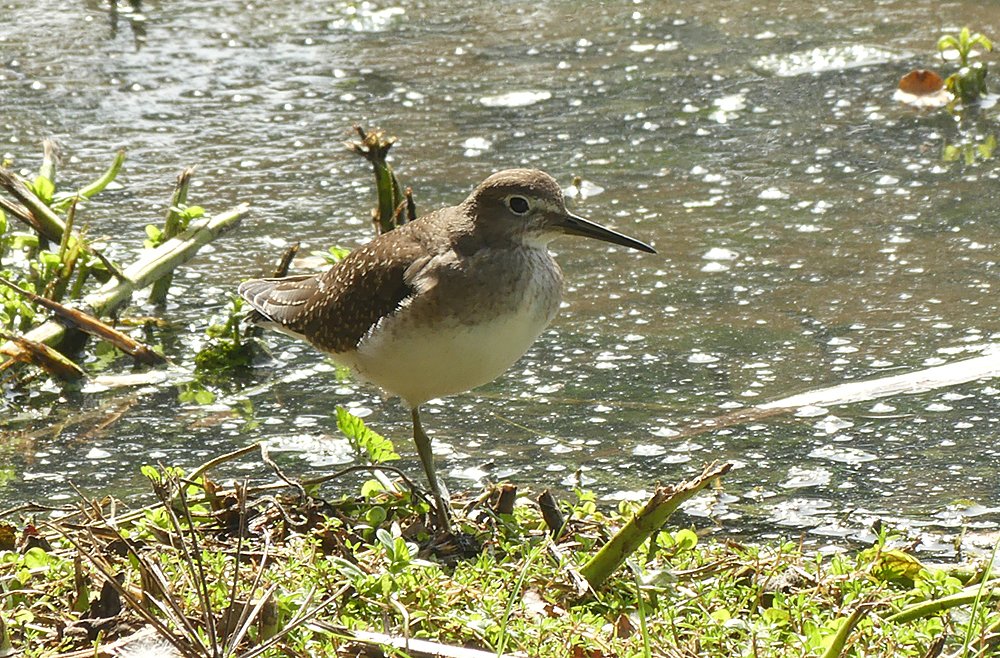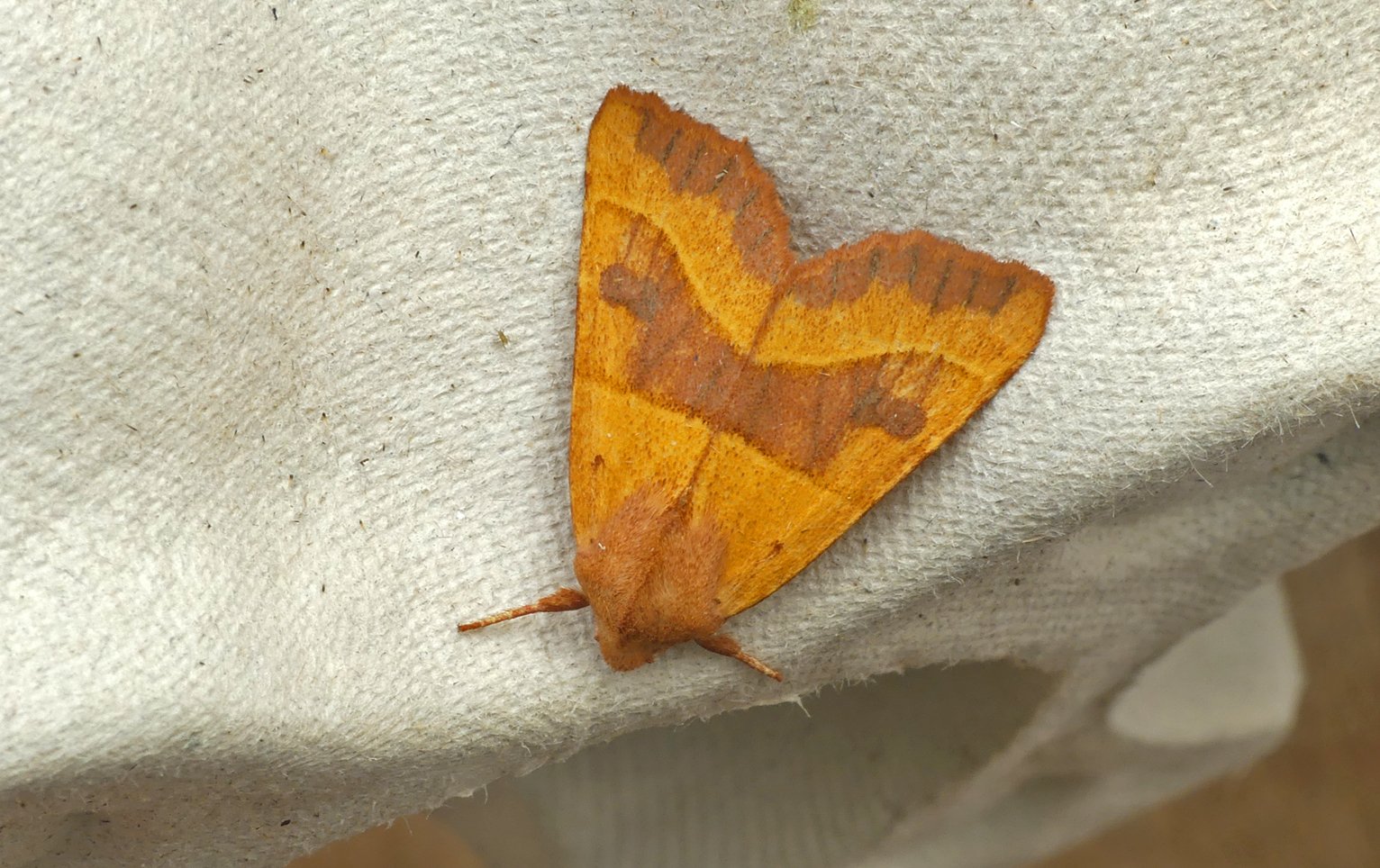September 2023
/Second day back at work after the summer holidays - always a thrill - and I am plodding through a thorough morning of teacher training. A check of the phone at the start of lunch hour left me a bit puzzled, with a note on the WhatsApp grapevine from our UK correspondent, “juvenile Solitary Sandpiper apparently photographed within the last 90 mins somewhere on Guernsey”. This was accompanied by a couple of pics which didn’t not look like a Soli Sand. This is of course, potentially very exciting but the natural reaction is that something has gotten mixed-up in the communication and that it can’t be true. The next message was that it was taken at Rue des Bergers (just minutes from me at work), and the message after that was that it was still present. I snatched my car keys and flew out the car park to see for myself.
Bursting into the hide, there were a few people there watching already and I could see the bird pottering around in amongst the weeds. My first question was “has anyone seen the rump?” because the key and easy id feature for Solitary Sandpiper, as opposed to Green Sandpiper, is that it has a dark rather than a bright white rump. In fact it’s such an easy feature, that I didn’t really know what else to look for to confirm the ID. It did look a bit different to Green Sand - paler above and a more marked face, very slender and elongated - but I wanted to be 100% sure, so I needed to see it fly. Of course, it just poked around in the weeds and didn’t fly until I wasn’t paying attention and I missed it! I watched it for a bit longer and it suddenly flew again. At least this time I managed to catch it with my naked eye as it went across the pond and was satisfied that I saw no white rump. It was indeed a SOLITARY SANDPIPER!
Solitary Sandpiper - Rue Des Bergers, 5 Sep 23
Solitary Sandpiper - Rue Des Bergers, 5 Sep 23
This was a new *British species for me, although I did record one in Canada many years. It is the second record for Guernsey, the first being at this same pond in 1997, just before I arrived in Guernsey. It is a real rare bird and only occurs a few times a year this side of the Atlantic. When it next landed it was on the near side of the pond and gave excellent views. I had to almost lean out of the window to take photos. When it was up close, its slender, attenuated appearance was more obvious and it was very much not a Green Sandpiper. I went down again after work but there was no sign, or on the next couple of days, but it was still visiting the pond during the week, just not when I was there.
Solitary Sandpiper - Rue Des Bergers, 5 Sep 23
Solitary Sandpiper - Rue Des Bergers, 5 Sep 23
Solitary Sandpiper - Rue Des Bergers, 5 Sep 23
Solitary Sandpiper - Rue Des Bergers, 5 Sep 23
Solitary Sandpiper - Rue Des Bergers, 5 Sep 23
Exactly a week later, things went from superb to bizarre. Another grapevine message appeared late morning suggesting there appeared to be TWO Solitary Sandpipers at Rue des Bergers. I was busy at lunchtime but saw a couple of photos and it seemed to be true, but I literally couldn’t believe it. That was until I went down there myself in the afternoon after work and saw the two birds together. They didn’t look any different from each other, but surely not. Only when they flew around a few times revealing dark rumps, I had to indeed believe my eyes - TWO SOLITARY SANDPIPERS!! Despite this almost paradoxical situation, there were two birds present - I had never heard of this happening before in Europe. I can only imagine that a ‘vagrating’ Solitary Sandpiper was flying through the night over the Channel, calling as waders are wont to do, when the original bird recognised the sound of its brethren and called back. The new bird, hearing this, probably pitched down to join it. Absolutely crazy stuff - a privilege to see. They did spend most of their time too far apart for shots together but I did manage one or two for posterity.
Solitary Sandpipers - Rue Des Bergers, 12 Sep 23
Solitary Sandpiper - Rue Des Bergers, 12 Sep 23
Solitary Sandpiper - Rue Des Bergers, 12 Sep 23 - the only shot I managed of a dark rump
Solitary Sandpiper - Rue Des Bergers, 12 Sep 23
2 Solitary Sandpipers - Rue des Bergers, 12 Sep 23
The rest of the month was very quiet for interesting birds. I had one decent day at Pleinmont on 16th September, where the good birds were all in one flock just south of Chatsworth. Along the bushes and fence line here I recorded numerous phylloscs and Firecrests, as well as 2 Redstarts, 2 Spotted and 1 Pied Flycatcher. I even managed to get one of each of these in one unique photo! there were a couple of Whinchats on the top and I found my first-ever “self-found” Long-tailed Blue along the cliff-path.
Pied Flycatcher, redstart and Spotted Flycatcher - Pleinmont, 16 Sep 23
Long-tailed Blue - Pleinmont, 16 Sep 23
I had a few flyover Yellow Wagtails on the patch, and also a single Spotted Flycatcher at Le Guet, but migrants along my stretch of coast were sparse. On the final day of September, I drove up to Parcq Lane, Vale, to see a Woodchat Shrike that had been found a few days previously. I watched it briefly from the car but had to move on as I had blocked the road.
Woodchat Shrike - Vale, 30 Sep 23
Woodchat Shrike - Vale, 30 Sep 23
There was some excellent moths in the trap in the first half of the month. The new species, Spiny Hook-tip, was recorded each night - I suspect the last few years’ Oak Hook-tips were all this species. On 6th Sep there was a nice selection including rarely-recorded Epinotia immundana, Eudonia palida, Wax Moth and Engrailed. The highlight of 9th Sep was two fabulously massive Clifden Nonpareils, the once-mythical species which will no doubt become more regular very soon. On 15th Sep there looked to be a little arrival of immigrant species including a Radford’s Flame Shoulder, the first Dewick’s Plusia for ages and ages, and a new species for me and the garden, a Centre-barred Sallow, which is a rather fabulous orange and rufous species.
Clifden Nonpareil - Garden, 9 Sep 23
Clifden Nonpareil - Garden, 9 Sep 23
Centre-barred Sallow - garden, 15 Sep 23
Dewick’s Plusia - garden, 15 Sep 23
Radford’s Flame Shoulder - garden, 15 Sep 23
Sarce Bordered Straw - Pulias, 15 Sep 23
Fig-leaf Skeletoniser - Ft. Hommet, 8 Sep 23 - when I heard that this adventive species had been discovered in Guernsey, I checked the first fig tree I got to and the larvae were common - a new species for me.
Slow Worm - garden, 4 Sep 23 - a pretty large individual, the first i’ve seen in the garden for ages.
Slow Worm - garden, 4 Sep 23
Red Bistort - Ft George, 10 Sep 23 - an exotic asian garden-escape species growing abundantly along the pathside
leaf of the year in the garden - grapevine



























